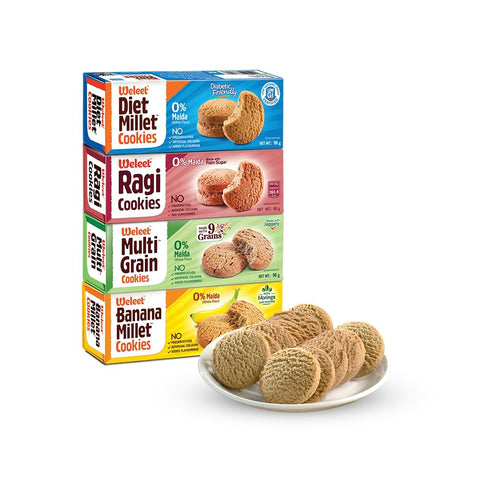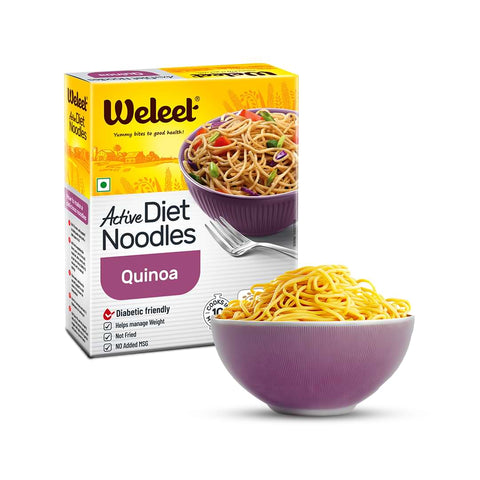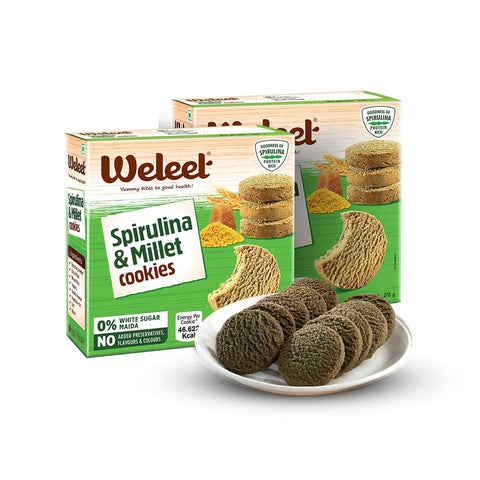In a world where hectic schedules and fast-paced lifestyles dominate, it’s not uncommon for many to find themselves feeling hungry even after consuming what seems to be a full meal. While various factors can contribute to this phenomenon, one crucial aspect that often goes unnoticed is the reduced intake of fibre in our diets. This blog explores the connection between reduced fibre consumption and How high fiber food Influences the feeling of satiety?
Why Fiber is Necessary?
The Fiber Factor
Feeling hungry after a seemingly satisfying meal may be indicative of a diet lacking in essential nutrients. Three key components that play a pivotal role in promoting fullness are protein, fibre, and healthy fats. In this context, the spotlight is on fibre, a dietary component primarily found in plant-based foods that the modern diet often overlooks.
The Role of Fiber
Fibre is a non-digestible carbohydrate that adds bulk to our diets, slowing down the digestion process and promoting a prolonged feeling of fullness. Unlike refined carbohydrates, which are rapidly digested and leave us craving more, high-fibre foods provide sustained energy and contribute to maintaining a healthy weight.
Benefits of Fiber
Satiety: High-fiber foods take longer to chew and digest, promoting a sense of fullness that lasts longer, reducing the likelihood of overeating.
Weight Management: The bulk provided by fibre helps control portion sizes and reduces overall calorie intake, contributing to weight management and preventing obesity.
Digestive Health: Fiber aids in maintaining a healthy digestive system by preventing constipation and promoting regular bowel movements.
Blood Sugar Control: Soluble fibre can help regulate blood sugar levels by slowing the absorption of glucose, beneficial for individuals with diabetes or those at risk.
Read More: CAN WE SWITCH SUGARS WITH NATURALLY DERIVED SWEETENERS?
Common Causes of Persistent Hunger
Inadequate Protein and Healthy Fats: A meal lacking in protein and healthy fats can leave you feeling hungry shortly after eating. Combining these with high-fibre foods creates a powerful trio for sustained satiety.
Dehydration: Sometimes, the sensation of hunger may be mistaken for thirst. Maintaining hydration is crucial for general health and can reduce mindless snacking.
Stress: Emotional factors, such as stress, can trigger cravings and a feeling of hunger. Mindful eating and stress management techniques can mitigate these effects.
The Importance of High-Fiber Foods
Incorporating high-fibre fruits and vegetables into your daily meals is crucial for achieving a sense of fullness and promoting overall health. Some excellent sources of fibre include:
Whole Grains: Opt for whole grains like brown rice, quinoa, and oats, which contain more fibre than their refined counterparts.
Legumes: Beans, lentils, and chickpeas are excellent sources of both protein and fibre, making them a valuable addition to any diet.
Fruits and Vegetables: Include a variety of high-fibre fruits and vegetables such as berries, apples, broccoli, and spinach in your daily meals.
Also Read: LOW GLYCEMIC INDEX FOODS FOR DIABETICS: AVOID HIGH GLYCEMIC FOODSHow Much Fiber Per Day?
The recommended daily intake of fibre varies based on factors such as age, gender, and activity level. However, a general guideline suggests that adults should aim for at least 25 grams of fibre per day for women and 38 grams for men.
Indian food with high fibre
Whole Grains:
Brown rice: 1.6 grams per 100 grams.
Quinoa: 2.8 grams per 100 grams.
Millets (bajra, jowar, ragi): Varies, but generally around 1-3 grams per 100 grams.
Legumes and Pulses:
Lentils (dal): 7.9 grams per 100 grams.
Chickpeas (chana): 7.6 grams per 100 grams.Black gram (urad dal): 6.7 grams per 100 grams.
Green gram (moong dal): 7.6 grams per 100 grams.
Red kidney beans (rajma): 6.4 grams per 100 grams.
Vegetables:
Broccoli: 2.6 grams per 100 grams.
Spinach: 2.2 grams per 100 grams.
Carrots: 2.8 grams per 100 grams.
Cabbage: 2.5 grams per 100 grams
Cauliflower: 2.5 grams per 100 grams.
Green peas: 5.5 grams per 100 grams.
Fruits:
Guava: 5.4 grams per 100 grams.
Apples: 2.4 grams per 100 grams.
Pears: 3.1 grams per 100 grams.
Oranges: 2.4 grams per 100 grams.
Bananas: 2.6 grams per 100 grams.
Berries (strawberries, blueberries): 2-4 grams per 100 grams.
Nuts and Seeds:
Almonds: 12.5 grams per 100 grams.
Walnuts: 6.7 grams per 100 grams.
Flaxseeds: 27.3 grams per 100 grams.
Chia seeds: 34.4 grams per 100 grams.
Sunflower seeds: 8.6 grams per 100 grams.
Pumpkin seeds: 6 grams per 100 grams.
Whole Wheat Products:
Whole wheat bread: 6.9 grams per 100 grams.
Chapati: Approximately 2.7 grams per 100 grams.
Brown rice: 1.6 grams per 100 grams.
Oats:
Rolled oats: 10.6 grams per 100 grams.
Steel-cut oats: 10.8 grams per 100 grams.
Oat bran: 15.4 grams per 100 grams.
Fiber-Rich Snacks:
Popcorn: 14.5 grams per 100 grams.
Roasted chickpeas: 7.6 grams per 100 grams.
Mixed nuts: Varies, but generally around 6-12 grams per 100 grams.
Root Vegetables:
Sweet potatoes: 3 grams per 100 grams.
Potatoes with skin: Approximately 2.2 grams per 100 grams.
Feeling hungry even after consuming three meals a day is a signal that our bodies may be lacking essential nutrients, with reduced fibre intake playing a significant role. By incorporating high-fibre foods into our diets, we can enhance our overall well-being, promote satiety, and curb the persistent feeling of hunger. Don’t underestimate the power of fibre – it’s not just a means to prevent constipation but a vital component for achieving a balanced and satisfying diet.













